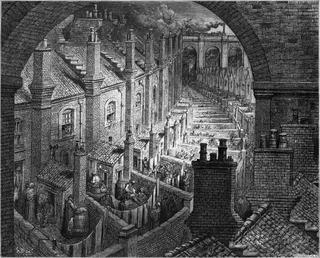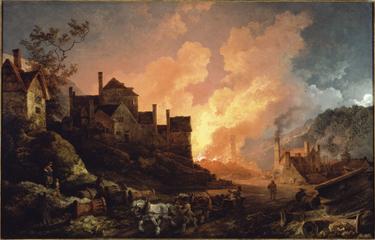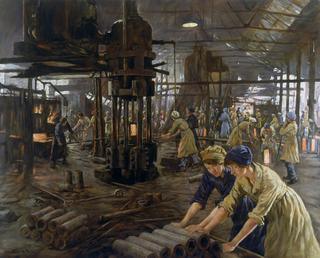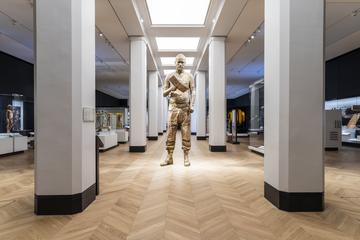
Plate 1: The station at Euston Square.
- Made:
- 1837
- maker:
- Thomas Talbot Bury and J Harris, J






Plate 1: The station at Euston Square.
The station at Euston Square, now known simply as Euston, was London’s first inter-city railway station. The terminus of the London & Birmingham Railway, it opened in 1837, the same year this print was published. As you can see, the station design is simple: a train shed with two platforms. Inevitably the station quickly became overcrowded — its first major expansion began less than a decade later in 1846.
Thomas Talbot Bury (1809–1877) produced the drawing that this aquatint is based on. Bury was an architect and artist who engaged in a wide variety of projects. Perhaps his most high profile project was designing details of the Houses of Parliament with fellow architect-artist August Pugin. All in all, Bury’s major buildings include 35 churches and chapels, 15 parsonages, 12 schools, and 20 other large public buildings and private residences in various parts of England and Wales. His artistic practice was similarly varied, including a large picture representing, in a single view, all the buildings he designed (now in the RIBA collection). During the railway mania of the 1830s, he made many drawings of railways. Although Bury is known to have sometimes done the engraving work himself, these railway prints were usually engraved by someone else.
This aquatint print is part of the series ‘Six Coloured Views on the London and Birmingham Railway, from Drawings made on the Line’, published by Ackermann. The firm’s Anglo-German founder, Rudolph Ackermann, was an early adopter of lithographs and the firm became famous for popularizing the new print medium. Even so, Ackermann continued to publish other types of print, as demonstrated by this aquatint series.
It has been estimated that no fewer than 2,000 prints of railway subjects were produced during the years 1830 to the late 1840s, and scarcely a line opened without at least one view of its engineering accomplishments being published. It is difficult for us today to understand the emotional as well as financial commitment to railways during these early years. The railway was often seen as a slowly spreading symbol of change and progress towards a better world.
Details
- Category:
- Art
- Object Number:
- 1945-52/1
- Materials:
- paper (fibre product)
- type:
- credit:
- Sabin, F.T.




